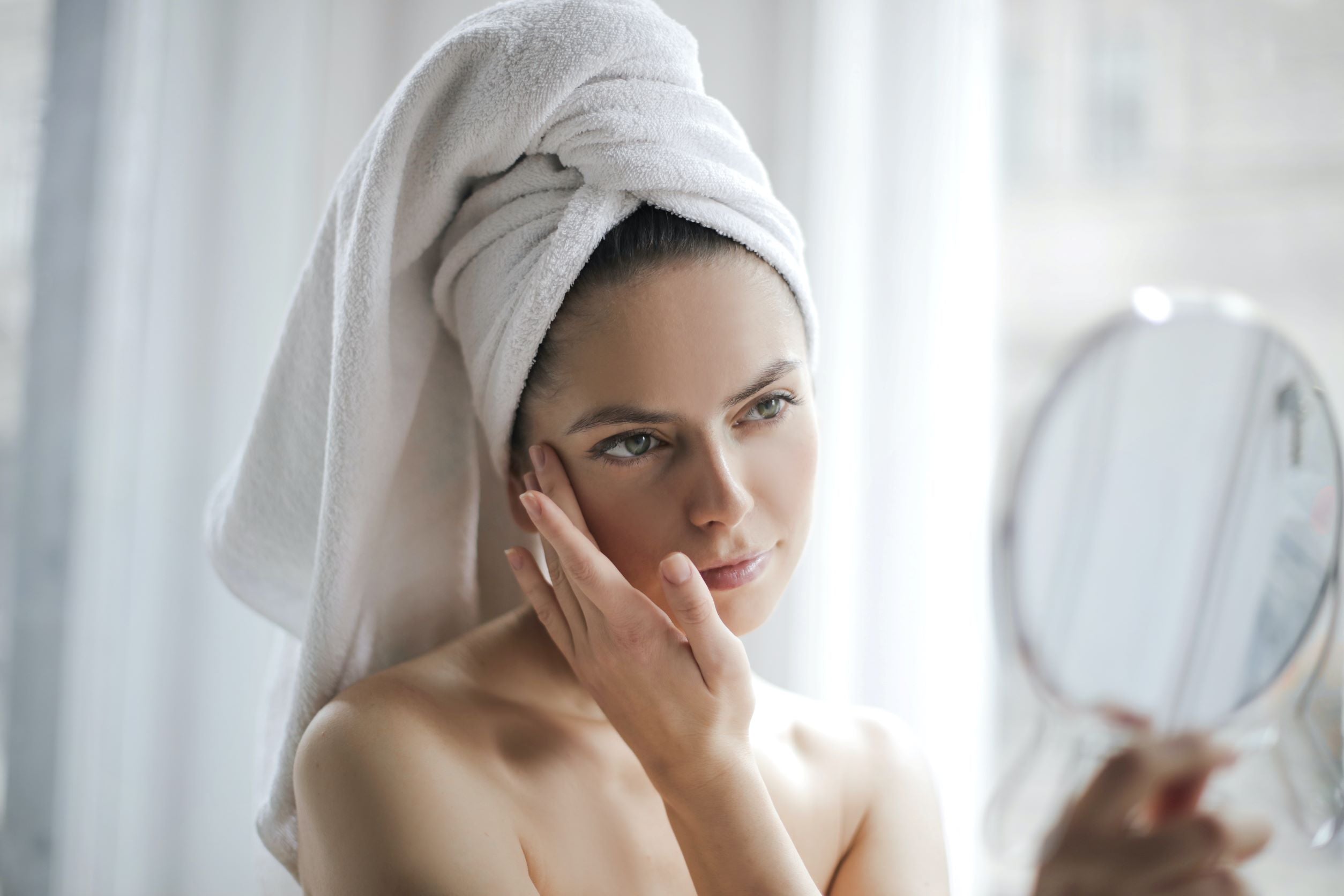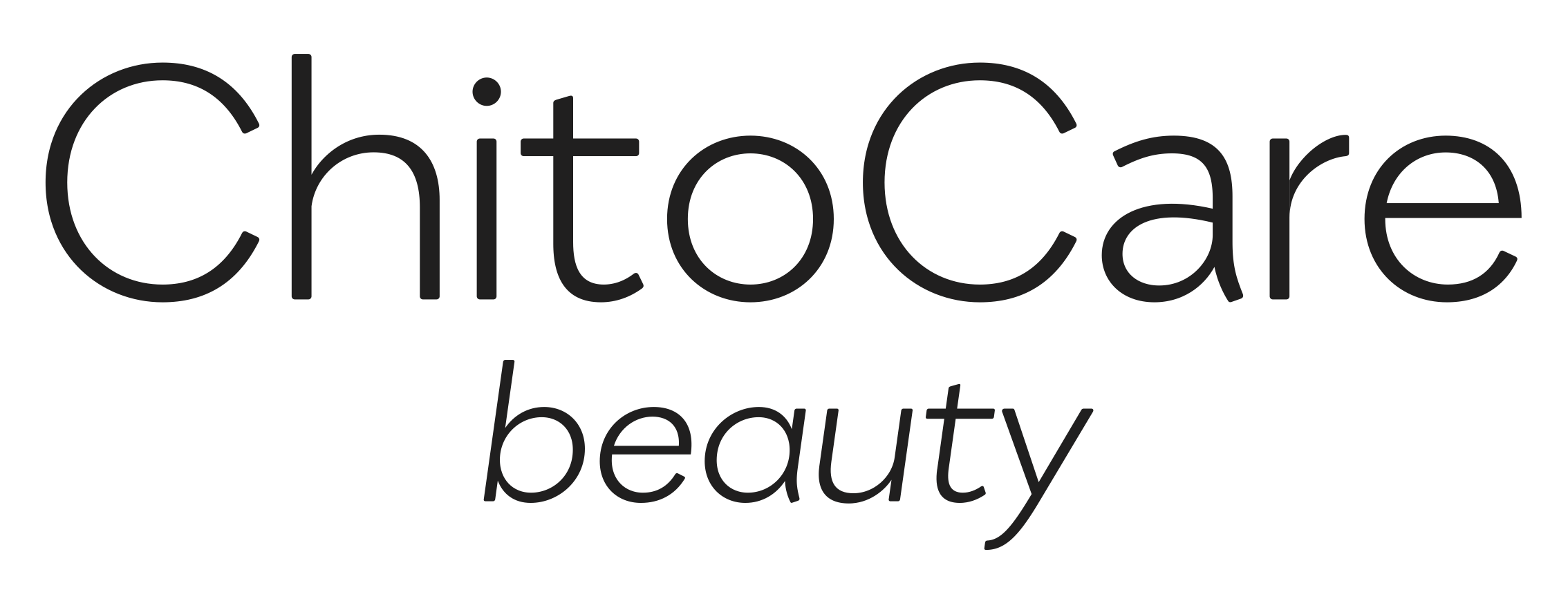
Tips for Treating Acne Scars
Acne might not be something most adults have to worry about, however the ghosts of pimples past can persist long after adolescence has given way to maturity. We take a look at some ways to treat acne scars and marks, and some helpful ingredients and ChitoCare products that can aid the healing process.
For most of us, acne is a distant memory that has faded into the past alongside bleached jeans and braces. However, for many, the scars and marks of acne have not faded completely and some adults, especially women going through menopause, still suffer from unpleasant breakouts well after the teenage haircuts have grown out. If you have ever woken up to a large, sore pimple, you know how unwelcome and uncomfortable acne can be. Not only does it affect one’s self-esteem, it can also be quite painful, with visible long-lasting aftereffects.
What is acne?
Acne comes in many different shapes and sizes. Depending on the cause of the breakout, acne can appear in the form of whiteheads, blackheads, cystic bulges called pustules, red, inflamed bumps called papules, even nodular bumps, that grow deep under the surface of the skin, often causing painful infections within the pore.
The main cause of acne is clogged pores due to bacteria, grime, pollution and dirt, or due to excess oil, skin cell or sebum production. Normally, sebum is released by sebaceous glands in the skin to keep it moist. However, when excess sebum builds up inside the gland, it causes acne breakouts. Hormonal changes or imbalances can also be a leading cause of acne, and medical advice is often sought out for such cases, as treating acne externally is often not enough and action must be taken from within, often with the help of prescription medication.
How are acne scars formed?
Once a spot or pimple appears and essentially disrupts the skin, the body’s natural healing response is to produce scar tissue so as to heal breached skin. The more intense the inflammation or infection of the skin, the more likely it is for a visible scar to form. And, much like the spots that cause the scarring, acne scars and marks also come in all shapes and sizes.
Some scars go deep into the skin and can take years to fade completely. Small, deep holes in the skin, round areas of depressed skin that look like small craters and wide depressions with a bumpy appearance are all types of atrophic scarring and are caused by the skin's inability to regenerate tissue as the skin heals.
On the contrary, hypertrophic scarring is produced by too much collagen and appears in the form of elevated scars. Other acne marks look like small blemishes that have a darker colour than the rest of the skin. These are called dark spots and are caused by post-inflammatory hyperpigmentation. While dark spots are not technically scars and are not characterized by an uneven skin texture, they cause uneven skin tone and can be just as troubling.
Dealing with acne scars
Reducing the severity of breakouts will ultimately lead to fewer and less intense scars. There are several habits you can add to your skincare routine to help prevent breakouts from occurring too often.
Wear sunscreen
We’ve discussed the importance of wearing sunscreen to prevent sun damage and premature aging, and this is also true of preventing acne breakouts. Sunscreen not only protects you from harmful UV radiation that can lead to a number of skin conditions, but it also prevents acne scars from getting darker and more visible.
Never pop pimples
It can be tempting to try and reduce the appearance of spots by popping them, in the hopes of speeding up their cycle – but you are only making things worse. When you pop a pimple, you essentially create a small wound on the surface of your skin. By doing this, not only do you spread bacteria into the pores of breached skin, leading to further infection and triggering inflammation, you also make acne last longer. It becomes more visible, and it leads to more intense scarring than if you had just left it alone.
Use gentle products
Acne-prone skin is already sensitive, so using harsh products or scrubbing too hard in an effort to get rid of pimples will only irritate your skin further, weakening its protective barrier and potentially causing blemishes, inflammation and soreness.
Moisturize
Sometimes people with dry or acne-prone skin tend to avoid moisturizing, as some creams and lotions are comedogenic, leading to clogged pores. However, moisturized skin protects from environmental stressors that can lead to breakouts and irritation.
Hydrate from the inside and out
Sufficiently hydrated skin is healthier skin so making sure your skin doesn’t dry up will also help prevent acne breakouts. Quench your skin externally with a hydrating, non-comedogenic face cream like ChitoCare beauty Face Cream for both day and night, and flush out toxins by drinking enough water throughout the day.
Some ingredients that help treat acne scars
Chitosan
Chitosan is a biopolymer that keep the skin protected against harmful microorganisms that cause acne, inflammation and infection. It can prevent further inflammation and infection while keeping skin soft and smooth. Chitosan also locks in moisture and effectively treats chronic wounds like acne scars.
Hyaluronic Acid
Hyaluronic Acid is a skincare multi-tasker most known for regenerating skin cells and stimulating collagen production. As a scar starts to heal, new cells are produced and hyaluronic acid can boost that process, making the dermis layer of the skin plumper, firmer and more elastic. ChitoCare beauty Anti-Aging Repair Serum contains Hyaluronic Acid that will help boost your collagen synthesis, while also slowing down the aging process that makes acne scars more visible.
Vitamin A
Vitamin A and its derivatives (often in the form of retinol) can help smooth scars by speeding up cell regeneration. By improving skin texture and lessening discoloration, scars become less visible and your skin takes on a smoother look with a more even tone. ChitoCare beauty Face Cream contains aloe vera leaf juice, that is high in Vitamins A, C and E, all of which provide powerful antioxidant, antimicrobial and wound-healing action.
Vitamin C
Nourishing your skin with Vitamin C will not only help you achieve brighter skin by reducing uneven tone and pigmentation, it also encourages collagen production. Boost your Vitamin C content by consuming fresh fruits and vegetables like citrus fruits, tomatoes, broccoli, leafy greens and potatoes. Creams and serums high in Vitamin C will also feed your skin externally and nourish it with powerful antioxidants that fight free radicals and pigmentation.
Vitamin E
This vitamin is rich in antioxidants that help fight free radicals than can be a contributing factor to acne breakouts. By filling up on Vitamin E, you are helping your skin stay protected from inflammation and sun damage, which can weaken the skin’s protective barrier. Vitamin E also helps reduce the appearance of fine lines and marks caused during the healing process. ChitoCare beauty Face Cream contains antioxidants like Vitamin E, supporting the natural skin renewal process.


